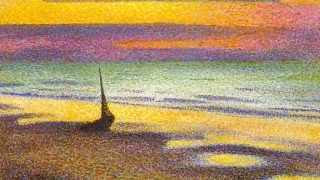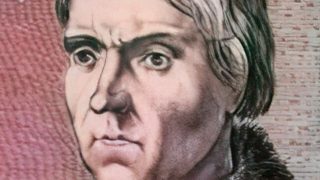Sometimes, an art movement aims to achieve a goal that elevates the art its members produce to a new plateau. This is pretty much what can be said about the Pre-Raphaelite Brotherhood (PRB), a group of English artists, poets, and art critics, who are also known as the Pre-Raphaelites. Perhaps the name rings a bell, …
Artists
The history of Indian painting is as diverse and vibrant as the country itself. With roots dating back to ancient times, Indian artistry has continuously adapted to changing social, religious, and political landscapes. From the grandeur of royal courts to the enthusiasm of spiritual devotion, each epoch has left its mark on the canvas. The …
Iceland is a remote country in the utmost northwestern country of Europe and is best known for its magnificent natural wonders. Because of the abundance of natural beauty, a distinct type of landscape painting emerged in this sparsely-populated place in the 20th century. Many Icelandic artists were trained in northern Europe. Because of this, they …
Turkey is a large country in the utmost southeastern part of Europe that features both a European and an Asian part. The largest city in the country (not the capital) is Istanbul, formerly Byzantium and Constantinople, which majestically separates both continents. Art has been produced here since the ancient Greeks and Romans arrived in this …
It’s probably not surprising that very little is known about the life of this Romanesque artist. After all, he was active almost 800 years ago. Berlinghiero (1175-1242), also known as “Berlinghiero Berlinghieri” or “Berlinghiero of Lucca,” left behind a number of famous Romanesque artworks that were highly influential at the time. His art was influenced …
Of all the Gothic artists who produced art during the Middle Ages in Italy, this particular sculptor might be one of the most influential. Nicola Pisano (1205/1207-1278) lived in the 13th century, a period in which Gothic art was still the dominant style all across Europe. The sculptures and reliefs he created, however, already show …
When a young aspiring French artist started experimenting with a revolutionary new painting technique in the early 1880S, it took him several years to perfect it. Pointillism is also known as “Neo-Impressionism,” and was developed during the Post-Impressionist era in the late 19th century, which in turn was a development of the major Impressionist movement. …
This 20th-century art movement is best known for its towering skyscrapers constructed in the United States during the Roaring Twenties. It did, however, emerge in France shortly before the outbreak of World War I. This tragic event meant that it only flourished during the 1920S and 1930s. Art Deco is short for Arts Décoratifs, a …
Very few art movements in history were so in line with what could be perceived as feminine art than the Impressionist movement of the late 19th century. The Impressionist artist used loose brushstrokes and started painting outdoors in the 1860s. This was revolutionary and they faced stiff criticism initially. This gradually changed as some major …
The 15th century was an important period in the history of art in Europe, and this applies to both the Northern and Southern parts of the continent. Oil painting developed in northern Europe and this allowed for a much more detailed approach to art. This is reflected in the oeuvre of Early Netherlandish painters. One …









